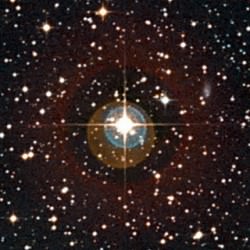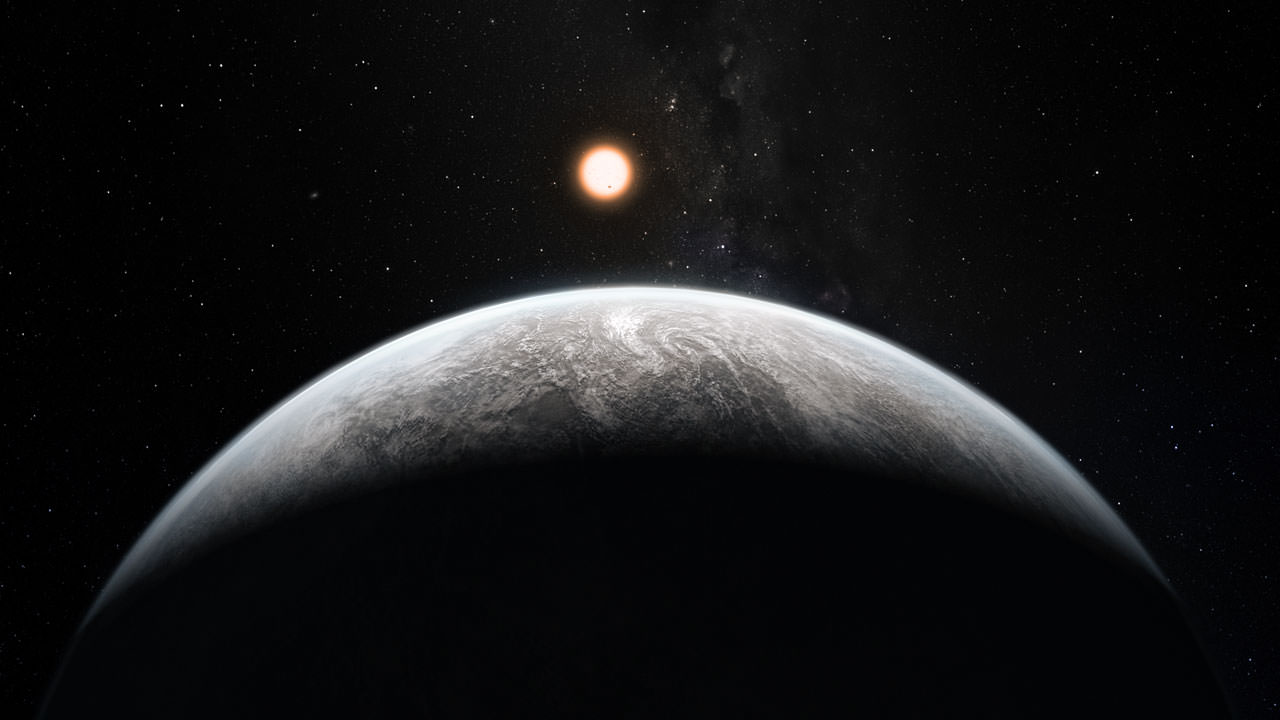[/caption]
Yesterday astronomers with the High Accuracy Radial velocity Planet Searcher or HARPS, announced a record-breaking discovery of more than fifty new exoplanets. This is the largest batch of confirmed extra solar planets ever announced at once. Another reason the discovery is noteworthy is that sixteen of the planets that were detected fall under the “super-Earth” classification, meaning the planets are thought to be rocky worlds less than ten times Earth’s mass.
The HARPS team, led by Michel Mayor from the University of Geneva, used the 3.6-metre telescope at ESO’s La Silla Observatory in Chile and claim their spectrograph instrument on the telescope is the most successful planet-finder to date. The team’s data suggests that about 40% of stars similar to our Sun have at least one planet less massive than Saturn.
The announcement of the big planetary haul was made at the Extreme Solar Systems II exoplanet conference taking place this week in Wyoming in the US.
How did Mayor and his team discover so many planets, and how are they certain of their findings?
The HARPS instrument uses a technique called “radial velocity”. Essentially, the instrument detects the slight movement of a star moving toward and away from observers on Earth. The changes in radial velocity shift the star’s light spectrum. When the star moves away from observers on Earth, the light is shifted to longer, redder wavelengths, called redshifting. When the star moves toward Earth, the opposite happens and the star’s light is blueshifted. Through various hardware and software upgrades over the years, HARPS is now so sensitive, it can detect radial velocities of about 1 meter per second and exoplanets less than twice the mass of Earth.
The radial velocity method of exoplanet detection that HARPS uses is different from say, the Kepler mission which uses the “transit” method to detect exoplanet candidates. The transit method, comparatively speaking, still uses the light from a distant star, but instead of measuring redshift or blue shift, Kepler instead looks for a dimming of the star’s light as exoplanets pass in front of their host star.
HARPS has been operating for the past eight years, using the radial velocity technique to discover over 150 new planets. HARPS has also detected a considerable portion of the known exoplanets less massive than Neptune (seventeen Earth masses). “The harvest of discoveries from HARPS has exceeded all expectations and includes an exceptionally rich population of super-Earths and Neptune-type planets hosted by stars very similar to our Sun. And even better — the new results show that the pace of discovery is accelerating,” said Mayor.

Based on these latest findings, as well as previous HARPS discoveries, the team plans to install an exact copy of the HARPS instrumentation on the Telescopio Nazionale Galileo in the Canary Islands. The duplicate HARPS will allow scientists to survey stars in the northern sky.
“In the coming ten to twenty years we should have the first list of potentially habitable planets in the Sun’s neighborhood,” Mayor said. “Making such a list is essential before future experiments can search for possible spectroscopic signatures of life in the exoplanet atmospheres.”
The total tally of confirmed planets orbiting other stars stands at about 600, depending on who you ask. The Jet Propulsion Laboratory’s PlanetQuest website, shows 564 exoplanets while the Extrasolar Planets Encyclopedia, a database kept by astrobiologist Jean Schneider of the Paris-Meudon Observatory, lists 645 alien worlds. The discrepancy comes because PlanetQuest doesn’t add to their total until an exoplanet has been completely confirmed.
Source: ESO Press Release
Ray Sanders is a Sci-Fi geek, astronomer and space/science blogger. Visit his website Dear Astronomer and follow on Twitter (@DearAstronomer) or Google+ for more space musings.


HARPS has long had a certain tension with Kepler’s result if I remember correctly, and these results makes them a significant difference:
– Kepler would have the frequency of Earth analogs as something like 10-30 % of stars. HARPS has them like something like 80 – 100 %, if I understand Sigurðsson correctly.
– Kepler would have the size distribution as a smooth 1/r^2 function of radius. HARPS sees two populations, superEarths up to 10 Earth masses and gas giants around 30 Earth masses IIRC. (Interestingly, the latter population is dependent on star metallicity, the former not.)
Apparently some of these differences can be a matter of different bias between transit methods (Kepler) and radial velocity methods (HARPS):
“Laughlin and Wolfgang created a simulation based on the HARPS data. In it, they created a population of planets between one and 17 Earth-masses around the more than 100,000 stars being monitored by Kepler. Giving those virtual planets varying characteristics and orbital periods between one and 50 days, the researchers then asked whether simulated planet populations could reproduce the Kepler observations. The answer was “yes.”
When peppered with two distinct kinds of planets in the size range — one rocky and dense, the other gaseous and fluffy — the simulation mimics Kepler’s data. “You don’t really have to force things into some strange configuration. You can explain the results of those surveys if you have these two distinct populations,” Laughlin says.”
Oh, and Sigurðsson tells of future radial velocity techniques that are stable “to 0.3 cm/sec” or 0.003 m/s. The fastest land snails tops at 0.013 m/s! (Though it is mostly anecdotal material, unfortunately.)
“super-Earth” classification, meaning the planets are thought to be rocky worlds less than ten times Earth’s mass. ”
I might be wrong, but that statement is incorrect, a Super Earth normally has a mass greater than our own earths mass?
Correct me if I’m wrong please 🙂
AFAIK, it’s definition goes between earth and 10x earth mass.
Exactly. My apologies for the ambiguity.
Why is it that HARPS discoveries are accepted immediately whereas Kepler’s discoveries have to be confirmed by some other telescope? If that is the case does it not make Kepler redundant?
It means Kepler has like 20 or so confirmed planets, that were also ‘discovered’ by ground based telescopes, but HARPS is already at 150 autonomous discoveries.
Perhaps the money spent on Kepler would have been better to spend on other instruments like HARPS or the next generation of ground-based telescopes.
I can’t answer your first question but it’s still worth spending money on detecting planets via the transit method because we can get information about those planets that could not be obtained through the radial velocity method.
good point.